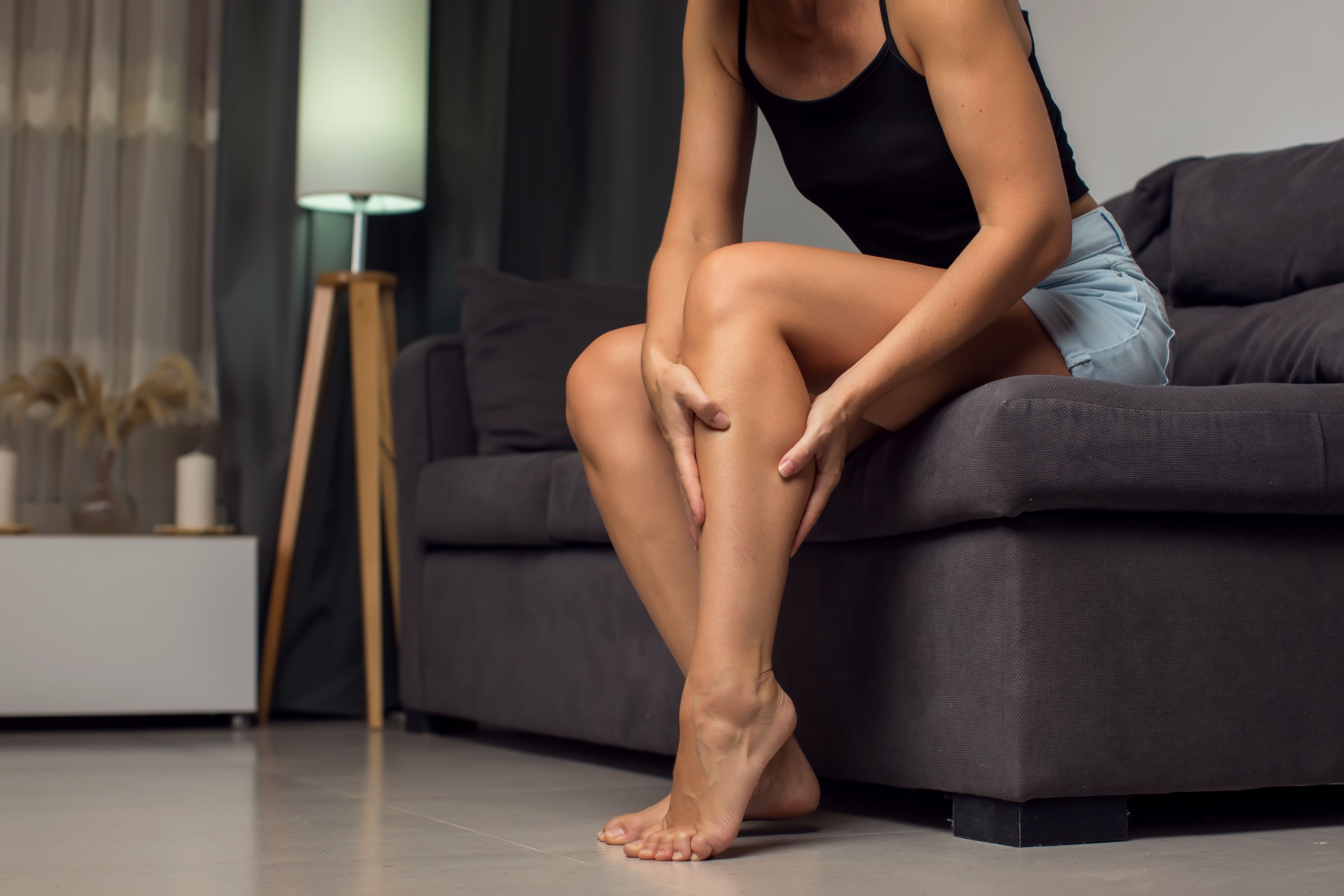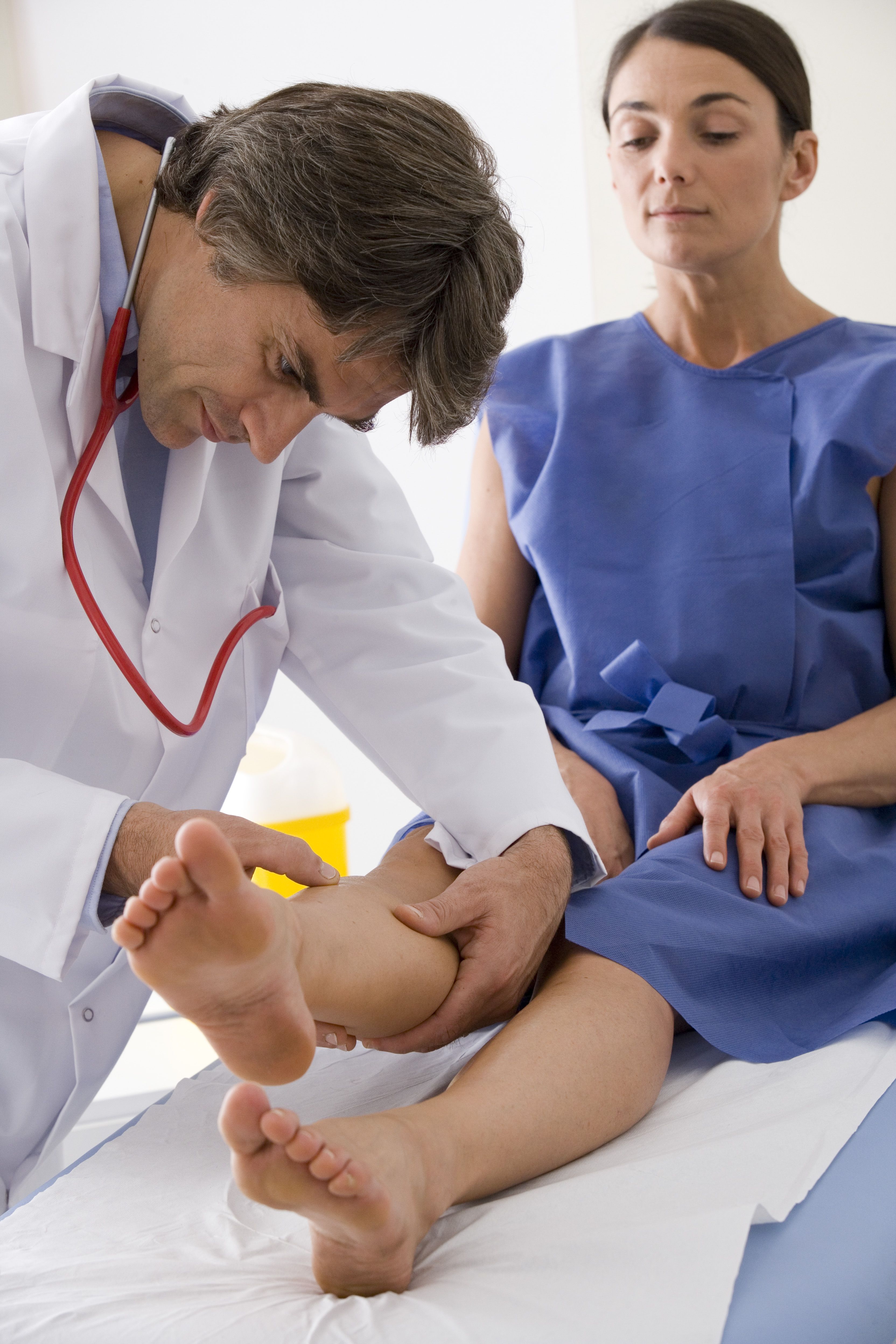How to recognize early signs of chronic venous insufficiency

Recognizing early signs of chronic venous insufficiency, and thus keeping it at lower stages, reduces your risk of serious complications such as leg ulcers.
Chronic venous insufficiency: what is it?
Chronic venous insufficiency is a common vascular disorder, that affects millions of people worldwide.1-5 This chronic venous disease is caused by impaired blood flow to your lower legs and feet, resulting in increased pressure in your veins as well as damage to your venous walls and valves.1,4-9
Healthy veins have valves that ensure blood flows one way, which is up towards the heart. Someone suffering from venous insufficiency has weakened or damaged valves.4,9 In this case, the veins in the legs are not allowing sufficient blood flow back to your heart, causing the blood to flow backward or pool and can make the blood collect in your legs.8,9
Why is it important to be able to recognize early signs of venous insufficiency?1-6,8
Chronic venous insufficiency can lead to numerous symptoms that can impact your health as well as your daily life and gets progressively worse if untreated. Indeed, delayed treatment can result in a more rapid disease progression, leading to complications such as:
- Spider veins: or broken veins.
- Varicose veins: that are dilated superficial veins that become progressively more tortuous and enlarged. They may develop bouts of superficial thrombophlebitis, recognized by painful, indurated, inflamed areas along the varicose vein.
- Progressive skin changes: such as wounds that don’t easily heal, irritated and cracked skin, red and weeping skin, and thickening of the skin of legs and ankles. This is called lipodermatosclerosis and is characterized by a painful hardening and thickening of the skin.
- Leg ulcers: among people experiencing chronic venous insufficiency, ≈20% develop venous ulcers.7 They are difficult to treat, as delayed healing and recurrent ulceration are very common. The impact of leg ulcers can be important because of an impaired ability to engage in social and occupational activities, reducing the quality of life.2,7
What are the signs and symptoms of chronic venous insufficiency?1,4-6,8,9
At first, chronic venous insufficiency causes very few, if any, symptoms and can be hard to spot. As this chronic venous disease progresses, it can lead to symptoms like:
- Leg discomfort: aching in the legs, or pain that gets worse after prolonged standing and is relieved by elevation of the leg.
- Swelling in the legs, ankles, and feet.
- Painful leg cramps or muscle spasms (charley horse).
- A tingling or numbness in the legs and feet.
- Intolerance to standing and walking.
- Pitting edema or swelling of the legs that holds an impression or dent when pressure is applied.
- Heaviness in the legs caused by swelling.
- Increase of symptoms or onset of restless leg syndrome, including tingling, discomfort not relieved by movement, the frequent urge to move or reposition your legs, and the sensation of “crawling” on the skin.

If you notice early signs and symptoms of chronic venous insufficiency, visit your doctor to avoid it progressing.
Who is at risk of venous insufficiency?3,4,6-9
There could be a lot of reasons why venous insufficiency would affect an individual:
- Advanced age (aged 55 or older)
- Obesity: fat cells can put pressure on veins in the legs and lower body, causing weakness and inflammation in the veins and valves.
- Oral contraceptive use: the hormones can relax vein walls, which can make it difficult for the veins to pump blood as efficiently as they once did. Oral contraceptives might also lead to water retention, which can increase blood volume and pressure on the vessels.
- Tobacco use: carbon monoxide and tar in cigarette smoke cause venous damage by lowering blood oxygen levels, which can cause inflammation in the veins.
- Pregnancy: the venous system is altered during pregnancy, both functionally and structurally. Hormonal changes during pregnancy can relax the vein walls, causing weakened valves. This coupled with an increase in blood volume during pregnancy can cause the venous valves to stretch or become weak, limiting the exchange of oxygenated blood.
- History of deep vein thrombosis or thrombophlebitis: deep vein thrombosis is a common cause of chronic venous insufficiency, in which a blood clot can damage the valves that allow for blood flow to return to the heart. A lack of exercise could cause this to happen because when you exercise, blood pumps to the heart due to the expenditure of energy; this, in turn, is the flow of blood to the heart.
- Damage to your leg: due to injury, surgery, or previous blood clots.
- Prolonged standing: being on your feet for long periods can cause the blood to pool in your legs and your veins to become inflamed, putting strain on your veins and the venous valves and potentially causing damage.
- Sedentary lifestyle: or any condition that weakens the calf muscles can impair venous return, preventing oxygenated blood from getting back to the lower body. Furthermore, the inaction associated with staying sitting for a long while and the pressure that would be raised can weaken the valves. Over time, due to sitting or standing for long periods, or anything that constricts the veins in the lower body can cause chronic venous insufficiency.
- Calf muscle pump impairment: this condition can be caused by injury, disease, a sedentary lifestyle, or neurological issues. Muscles in the leg provide a significant pump function to assist in recirculating venous blood back into the heart. This is sometimes called “the second heart”. An injury or weakness in the calf, foot, or leg muscles, or anything that prevents the muscles from working appropriately can negatively reduce venous return of blood to the heart.
- Genetics and family history: if you have a family history of obesity or high blood pressure, you are at risk for chronic venous insufficiency. Moreover, some people with chronic venous insufficiency have genetic conditions that may impact the integrity of their vein walls or valves.
- Female sex: women are more likely to have venous insufficiency compared with men, who tend to see symptoms of chronic venous insufficiency around age 65-70, while women tend to see symptoms as early as their 40s.
How to manage venous insufficiency at home
Some people suffering from chronic venous insufficiency can manage their symptoms with lifestyle changes, while others may need medical intervention to get symptomatic relief and eliminate the risks.2,4

One of the primary treatments for chronic venous insufficiency is compression stockings, that you can put on before you get out of bed in the morning to prevent swelling throughout the day.3,5,9 It is also important to:3,5,8,9
- Get plenty of exercise, especially low-impact activities such as swimming, cycling, or walking.
- Keep your legs elevated above the level of your heart as often as possible.
- Keep your legs clean and well moisturized.
- Limit your salt intake.
- Eat foods that are high in fiber, such as whole grains, nuts, and avocados and that are high in potassium, such as tuna, chicken, and yogurt.